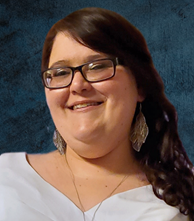Did you know April is National Minority Health Month? The theme selected for 2023 is “Better Health Through Better Understanding,” which focuses on providing culturally and linguistically competent healthcare services, information, and resources. In addition to sharing data about health disparities for limited-English proficient (LEP) patients, CyraCom wants to help you take meaningful steps toward better communication and support for diverse communities. Let’s dive in:
Stats: Healthcare Disparities for LEP Patients
Section 1557 of the Affordable Care Act requires healthcare organizations to provide interpretation services and translated documents for LEP patients. Despite these legal requirements, studies show that:
- Communication barriers lead to a greater risk of extended-stay hospitalizations, misdiagnosis, and grave medical errors for LEP patients.
- Statistically, non-English speakers, particularly in Latino and Chinese populations, readmit at a significantly higher rate than the general population. A review of 10.7 million Medicare patient records revealed that avoidable readmissions cost Medicare $17 billion a year because patients do not:
- Understand their diagnosis
- Know which medications to take and when
- Comprehend important information or test results
- Schedule a follow-up appointment with their doctor
- Receive adequate care at home
- The National Center for Biotechnology Information (NCBI) found that LEP patients are:
- 9x more likely to have trouble understanding a medical scenario
- 4x more likely to misunderstand medication labels
- 4x more likely to have a bad reaction to a medication
How healthcare providers can better support LEP patients
Hospitals can improve patient safety by enhancing communication strategies and implementing language services. We recommend implementing these crucial steps:
- Develop or improve your hospital’s Language Access Plan
A Language Access Plan creates a roadmap to better care for LEP patients. The document should include:- Detailed information about your organization’s LEP population
- The services you’ll offer, including which designated bilingual staff members or language services providers will implement video, over-the-phone, or on-site interpretation.
- How you’ll train and provide ongoing support for your staff, including distributing language access materials/equipment.
Need help with your Language Access Plan? Sign up for CyraCom’s Language Access 101 email subscription
- Notify patients about the language services you offer
- Print or order posters in your facility’s top 15 languages and post at main entrances and reception areas.
- Upload multilingual notices of the right to request free interpretation services onto your website. HHS provides translated resources.
- Consider adding an automated greeting or interactive voice response (IVR) in other languages to your telephone line, i.e., Press/Say 2 for Spanish.
- Choose the best language service for each patient’s needs
- Over-the-phone interpretation (OPI) has fewer equipment requirements, more language options, and faster connection times.
- Video remote interpretation (VRI) is best for connecting with LEP individuals who feel more comfortable viewing their interpreter, including people who are a part of the Deaf and Hard of Hearing community.
- On-site interpretation can be harder to schedule but works best when working with LEP patients who have cognitive limitations (children, mental/behavioral challenges) or will receive a difficult diagnosis.
- Translate forms, website content, patient instructions, and other critical information that English-speaking patients could use to better understand your organization’s processes and services.
Additional resources
- Joint Commission Standards Resource for Language Access
- Language requirements for DNV Healthcare Accreditation
- How CyraCom provides the tools and support services you need
- The Joint Commission’s Roadmap for Hospitals
Want a free language services consultation?
Contact us at getstarted@cyracom.com for all of your language services questions.










